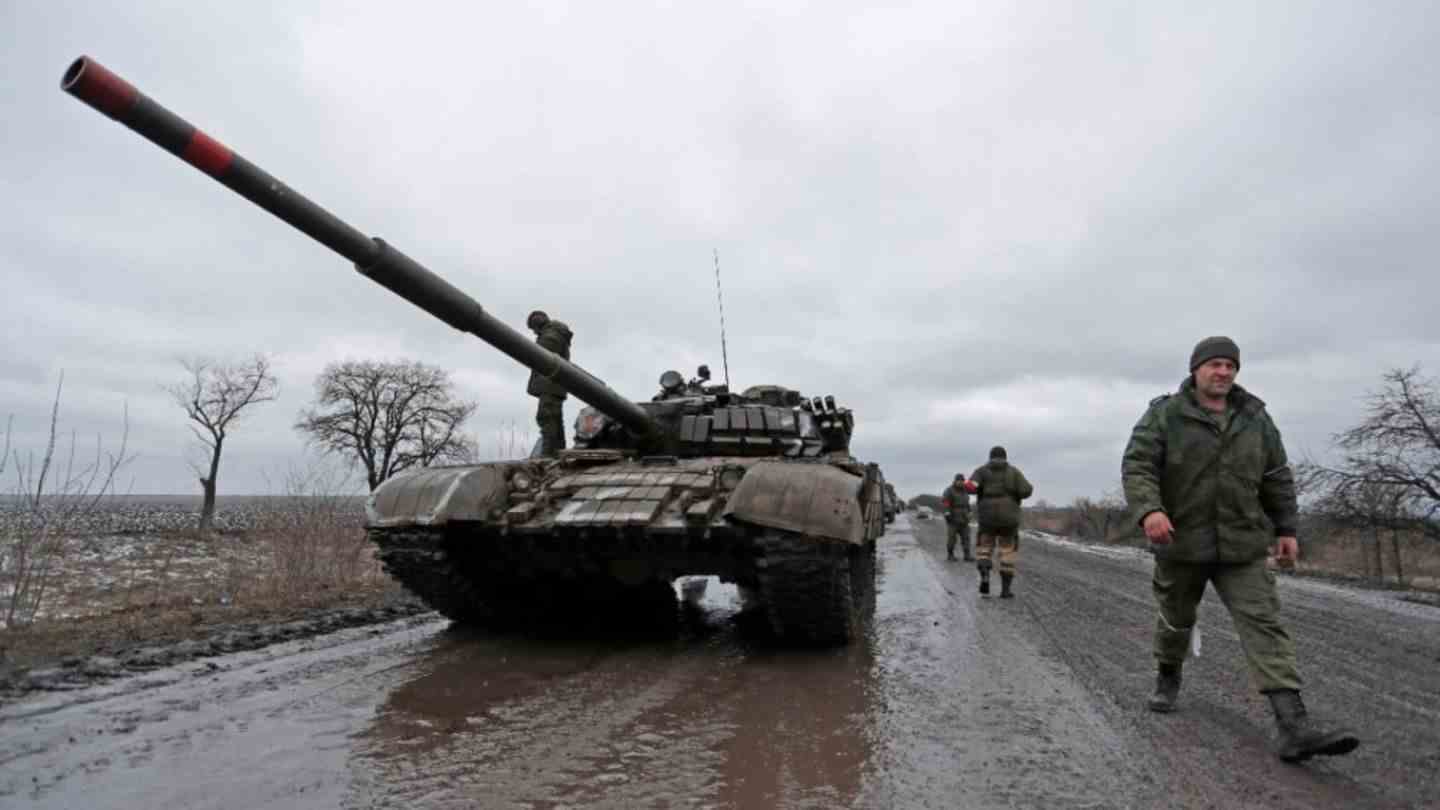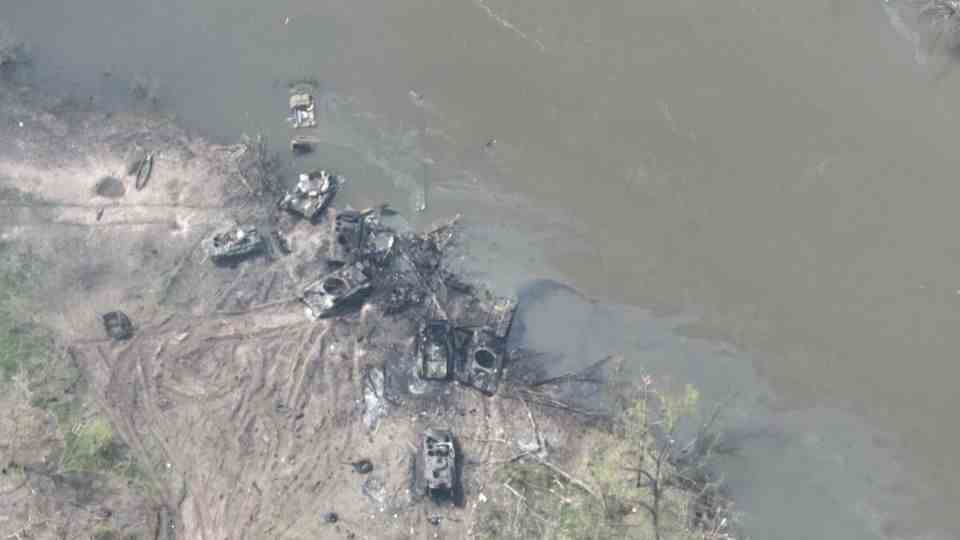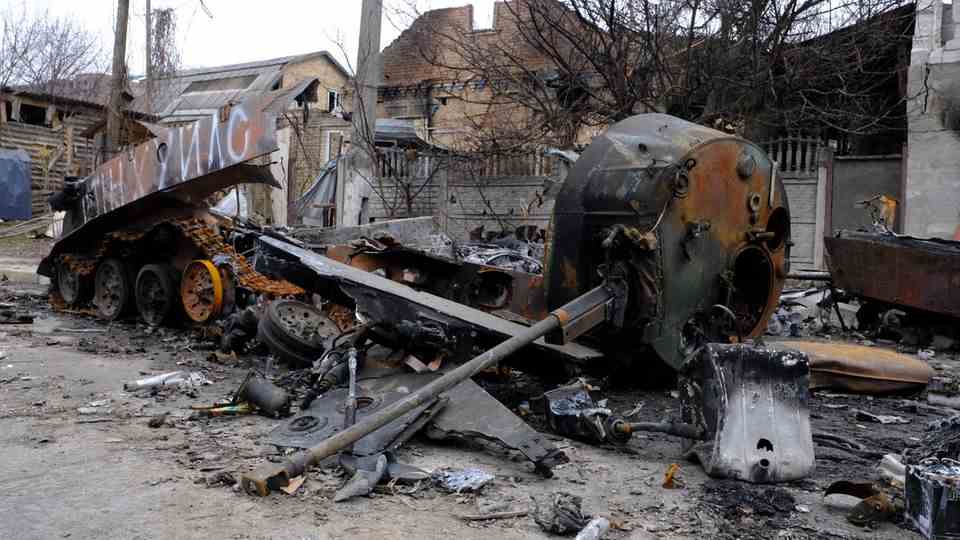war in Ukraine
Battalion tactical group – everyone is talking about it, but what actually is a BTG?
Russian troops in front of Kyiv
© Russian Ministry of Defense / PR
The so-called “battalion tactical group” or “battalion combat group” has become THE measure of military strength. The forces on both sides are given in BTGs, as naturally as “HP” in a motor vehicle. The only question is: what actually is a BTG or battalion tactical group?
We used to talk about divisions and regiments, today about the BTG. But hardly anyone knows what the abbreviation for battalion tactical group means. First of all, not all soldiers in Ukraine are organized into BTGs. Especially for forces that can be assigned to the light infantry, the division into BTGs makes little sense because they do not have the support units that make up a BTG. On the one hand, this is the case with the highly efficient special commands of both sides. But also among the poorly equipped and trained reservists – whether it’s Kiev’s territorial defense or the newly recruited soldiers of the self-proclaimed pro-Russian “republics” in the east.
Regular forces divided into BTGs
Only the regular army without commando troops can be divided into BTGs. A BTG is a massively reinforced battalion to which support weapons such as artillery and reconnaissance units are directly assigned. The number of personnel in the battalion almost doubled. Every three BTGs form a brigade. This tripartite division has a long tradition in the military. It is also not new to split up larger units into three combat groups that can act independently. This is how the Americans and the Germans used their divisions in World War II. However, the manpower of a US armored division was far higher at that time, i.e. that of a brigade in the Ukraine war.
The basic idea of the BTG: In this way, a powerful unit should be created that can fulfill its tasks in combat with its own resources. And who is not assigned artillery and other support by the hour for each mission. Basically, the composition of a BTG can be changed depending on the operational environment, but by combining them into one unit it is hoped to improve the interaction of the different branches of arms and systems.
Almost twice the manpower
A typical Russian BTG of a motorized brigade looks something like this. The actual combat or battle part includes the motorized infantry – the German term would be Panzergrenadiers – who are accompanied by a company of main battle tanks. Typically, that would be ten T-72b tanks. Together they form the actual motorized rifle battalion. These attacking troops are massively supported by other weapons in the BTG. The BTG has its own air defenses, as well as rocket artillery and howitzers, all short and medium-range weapons. Russian doctrine relies heavily on artillery firepower. The devastating volley guns should also include three TOS 1 rocket launchers in a BTG. In Russia, these systems are referred to as heavy flamethrowers, but have little in common with the flamethrowers known in the West. They fire rocket salvos with thermobaric warheads, the effect of which is enormous, but the range is limited. In addition, pioneers can come. There is a leadership group of the BTG, as well as units for drone reconnaissance and cyber warfare. In addition, BTG has its own fleet of vehicles for supply. The actual combat battalion of mechanized grenadiers and tanks is massively reinforced. It’s not that new. Formerly, the regiment consisting of three battalions was similarly designed. But the regiment has become obsolete as the standard size for military units worldwide.
This Russian structure was considered highly efficient and groundbreaking before the invasion of Ukraine. Now the reputation is more than damaged. Why is that? For one thing, the real state of Putin’s army is far worse than the flashing parades suggested. The army suffers from a lack of fighting spirit, poorly maintained equipment, insufficient training and even useless cheap tires. However, these shortcomings have little to do with the concept of the BTG.

Designed for another war
Various other factors do. Such a BTG is designed for movement combat of strong forces. But that’s exactly what Ukraine didn’t offer the Russians as they advanced in the first days of fighting. Kiev’s soldiers did not try to stop Putin’s BTGs at the border in an open field. They allowed them to advance while holding fixed positions, stiffening their resistance only in the sprawling suburbs of Kyiv and Kharkov. So the war that the BTGs were designed for didn’t happen. Instead, the units became involved in urban house-to-house fighting and their long supply routes were attacked independently.
And here there was a problem with such highly armed mechanized units, which has also plagued the US Army since the Second World War. Formations ideal for large tank battles have too much engineering and too few infantrymen for many forms of combat. And this form of fighting in unmanageable spaces was forced on the invaders by the Ukrainian defenders. Attacks on tank formations from a lurking position are typical of this phase of the war. Such a thing is possible because the Russians could not really secure the areas they occupied due to a lack of soldiers and they also do not have enough infantrymen to flank their movements.
More infantry
As a result, the BTGs did not advance, instead of a rapid war of movement, grueling battles broke out in suburbs. And then BTG’s next problem arose. The effect of artillery is enormous when it has suitable targets. Especially the salvo guns consume a lot of material. However, the Russian army was not able to replenish these supplies in the required quantity. There were local reasons for this. For example, that the Russians could not use any railway lines, that the army – despite Putin’s rhetoric – is more geared towards a defensive war on its own territory and that the Ukrainians successfully attacked the supply routes. But there is also a conceptual side: the BTG of this form is geared towards fierce but short battles; if the war gets stuck, it will have a supply problem. It was also shown that communication outside the BTG level was difficult. This was still possible within a brigade, but attempts to encircle the greater Kyiv area showed that Russia could not carry out coordinated actions at the level of several brigades.
However, the Russian leadership has recognized these problems and is trying to counteract them. Just a week after the start of the war, first Chechen fighters and then military contractors were added – in the West usually referred to as the “Wagner Group”. There are political reasons for their use, but these are not regular structures with an excess of heavy engineering. These infantry groups are supposed to make up for the lack of foot soldiers in the regular Russian troops and have then also borne the brunt of the urban fighting in Mariupol.




